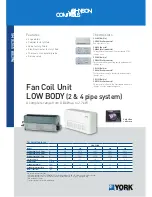
24
11. Troubleshooting
With this garden pump, you purchased a product built to the state of the art and operationally safe. Nevertheless,
problems or errors may occur. Therefore, observe the following information about troubleshooting.
Garden pump does not take in water
• Open any present shut-off valve on the pressure-side, since air cannot escape from the hose or in the garden pump.
• If required, fill water into the suction hose and the garden pump.
•
Switch off the garden pump and switch if on again after a few seconds.
• Use a backflow stop at the end of the suction hose.
• Check a coarse filter at the end of the suction hose for contamination.
•
Check the suction hose and all connection pieces for leaks.
•
The water level is too low or air is sucked in as well.
The garden pump does not start up or stops in operation
•
Is the garden pump on?
•
Check the power supply or the circuit protection and the FI protection switch. If the FI protection switch has trig-
gered, disconnect the garden pump from the mains voltage and check for damage (e.g. mains cable/housing).
•
The pump wheel inside the garden pump is blocked by dirt. Disconnect the garden pump from the mains, remove
the hoses and the closure plugs and flush the inside of the garden pump with clean water.
•
The overtemperature protection triggered. Disconnect the garden pump from the mains voltage and let the garden
pump cool off (at least 30 minutes). Remove the cause for triggering (e.g. water temperature too high, running dry
too long, etc.).
Conveyed volume reduces or is too low
• Check the suction hose or its coarse filter for contamination.
• Clean the water filter of the garden pump.
•
The garden pump sucks in air since the suction hose is not in the water.
•
Check the attachment of the suction hose to the garden pump.
•
Check the suction hose for leaks or bends.
•
The displacement reduces due to the principle the larger the overhead and conveyor height.
•
The hose diameter of the suction hose is too low.
















































